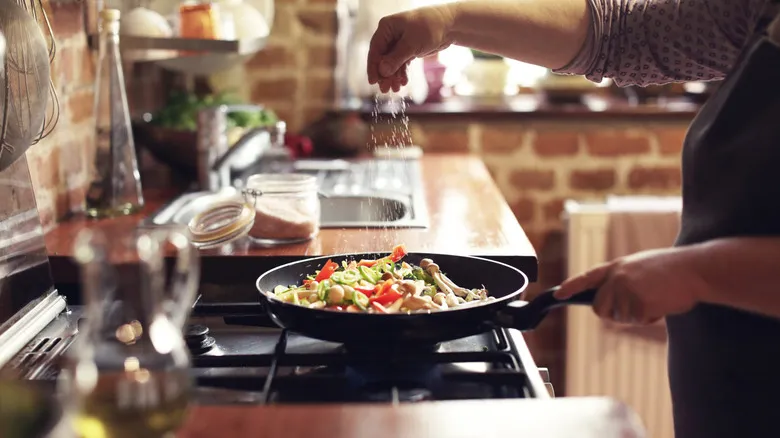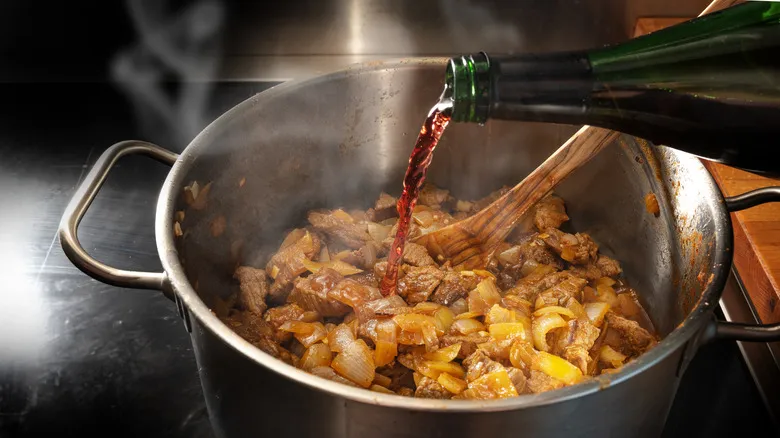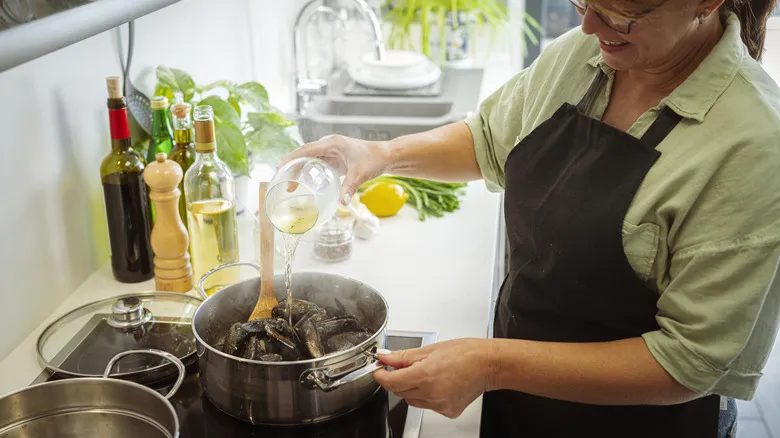How to adjust your dish when using cooking wine

Dry red and white cooking wines generally contain around 190 milligrams of sodium per 2-tablespoon serving. When preparing a dish, it's advisable to use less salt initially and then adjust the seasoning after incorporating and cooking the wine. Cooking wine has a higher alcohol content (approximately 17%) compared to regular wine; this extra alcohol evaporates during simmering, allowing the wine to be cooked for a longer duration.
The primary contribution of cooking wine to a dish is its acidity, which enhances flavor complexity. Red cooking wine is ideal for rich dishes such as hearty meat stews like boeuf bourguignon or roasted meats like coq au vin. In contrast, white cooking wine works well in creamy pasta dishes, risottos, and lighter soups. Rice wine is commonly used in various Asian recipes to impart an umami flavor and subtle depth. Cooking sherry, known for its nutty and caramelized notes, is often used in desserts.
When using these wines, be sure to check the label for sodium content and adjust your seasoning accordingly. It’s wise to hold back some salt (or salty ingredients) until after the cooking wine has been added and tasted. Keep in mind that you can always add more salt later if the dish seems a bit bland.
Wine vs. cooking wine

You don’t need to use cooking wine—regular wine works just as well, if not better. A good guideline for choosing a bottle is to select a wine that you would enjoy serving with your meal. This doesn’t mean you have to waste your prized bottle of Syrah in the pot. Instead, aim to pair the dish’s flavors with an affordable table wine, and why not enjoy a glass yourself while you cook? The alcohol will evaporate as the dish simmers, allowing the wine’s flavors to meld beautifully with the food.
Cooking wine, in contrast, is primarily designed for longevity. If you don’t drink wine and only need a small amount for a recipe, it might be more practical to use cooking wine rather than letting an entire bottle go to waste. Cooking wine is also generally cheaper than regular wine, but keep in mind that it often contains added salt, sugar, and preservatives.
If you prefer not to use either option in your dish, you can substitute with stock, Worcestershire sauce, or balsamic vinegar in savory recipes, depending on what the dish requires. Whatever you decide, be sure to taste your dish as you go. There’s a reason chefs frequently dip their tasting spoons into simmering pots—it’s the best way to check if the dish is too salty or just right.
Recommended

Can You Make Frozen Drinks With A Food Processor?

Why Champagne Bottles Are So Heavy

The One Mistake To Avoid When Pairing Wine With Spicy Food

The Biggest Myth About Keeping Champagne Bubbly
Next up

